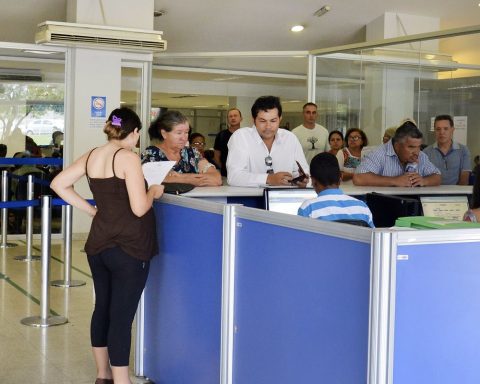The expansion of occupation in the second quarter of this year was disseminated among several economic activities, as indicated by data from the Pnad Contínua, released today (29) by the Brazilian Institute of Geography and Statistics (IBGE). The highlights were commerce (3.4%), industry (2.7%), public administration, defense, social security, education, human health and social services (4.5%).
According to the coordinator of Household Sample Surveys at IBGE, Adriana Beringuy, in the last group of activities, the expansion of 739 thousand people was influenced by basic education, especially elementary education. In addition to the seasonal behavior of expansion of this group, the intensification of on-site activities led to the absorption of professionals in the education segment, with a contribution from hiring in the health area.
Adriana Beringuy informed that, in general, the historical series shows that this grouping usually starts the year with retraction and presents growth from the second quarter. This behavior was not noticed in the years 2020 and 2021, and although there was a positive variation in the employed population in the group, it was not statistically significant. But in the second quarter of this. year, seasonality recurred.
According to Adriana, this group includes several segments, including public and private education and health, which had the most expansion. “It may be that, due to these two years [2020 e 2021], due to a certain partial suspension of face-to-face education activities, expansion has been more timid. With the intensification of the return of face-to-face education activities, it was necessary to mobilize or rebuild the structure or infrastructure of educational establishments.”
She stressed that the advancement in education was not restricted to teachers, but also to professionals in auxiliary services to the sector, in addition to the movement of hospital services. “As basic, fundamental education is provided essentially by the public network, it is the municipalities that provide this service. And the public education sector ends up being one of the biggest responsible for the growth of the population employed in this activity.”
Industry
Adriana highlighted that the industry played an important role in the occupation of over 332 thousand people, with growth of 2.7% in the quarter and 10% in the year. “The expansion comes from the food industry, from the clothing industry, and there was a bit of machinery and equipment industry. It was an important process of absorption of workers employed in the industry, which has as one of its characteristics to absorb workers through the portfolio. Part of the growth in the workbook is driven by this expansion in the industry,” she added.
In comparison with the previous quarter, commerce absorbed more than 617 thousand people, which, according to Adriana, was also a significant expansion. “Trade contributed to absorption with and without a portfolio. We had a lot of trade in both hypermarkets, supermarkets, clothing, so trade is also contributing to the expansion of workers both in the quarter and in the year.”
The survey revealed that there was significant growth in the construction sectors (3.8%), with more than 274 thousand people; information, communication and financial, real estate, professional and administrative activities (3%), more than 336 thousand people; other services (3.2%), over 158 thousand people, and domestic services (4%), or over 227 thousand people.
The coordinator of Household Sample Surveys at the IBGE recalled that the construction sector had retreated in the first quarter and returned to growth, this time by 3.8%. “Construction has unregistered and self-employed employment as the most marked characteristic for this activity, which has been growing in the quarter and in the year.”
Workforce
The workforce, which includes employed and unemployed people, reached 108.3 million people, the largest contingent in the survey’s historical series. The increase is 1% or 1.1 million people, compared to the last quarter. In comparison with the same period last year, it grew 4% or 4.1 million people.
In the contribution to the Social Security Institute, Pnad in the second quarter identified the largest contingent of contributors, with 62.1 million employed persons. “In terms of the percentage of taxpayers, although it is the largest contingent, the percentage is not yet. We have 63% of employed people who contribute to social security among all those employed.”
Search
According to the IBGE, Pnad Contínua is the main instrument for monitoring the country’s workforce. The survey sample per quarter in Brazil refers to 211 thousand households surveyed. Altogether, around 2,000 interviewers work on the survey, in 26 states and the Federal District, integrated into the collection network of more than 500 IBGE agencies.
Because of the covid-19 pandemic, as of March 17, 2020, the IBGE adopted the collection of survey information by telephone. The return of face-to-face collection was in July 2021.
According to the IBGE, it is possible to confirm the identity of the interviewer on the website Responding to IBGE, or through the Call Center (0800 721 8181), checking the registration, identity document or CPF, data that can be requested by the informant.

















